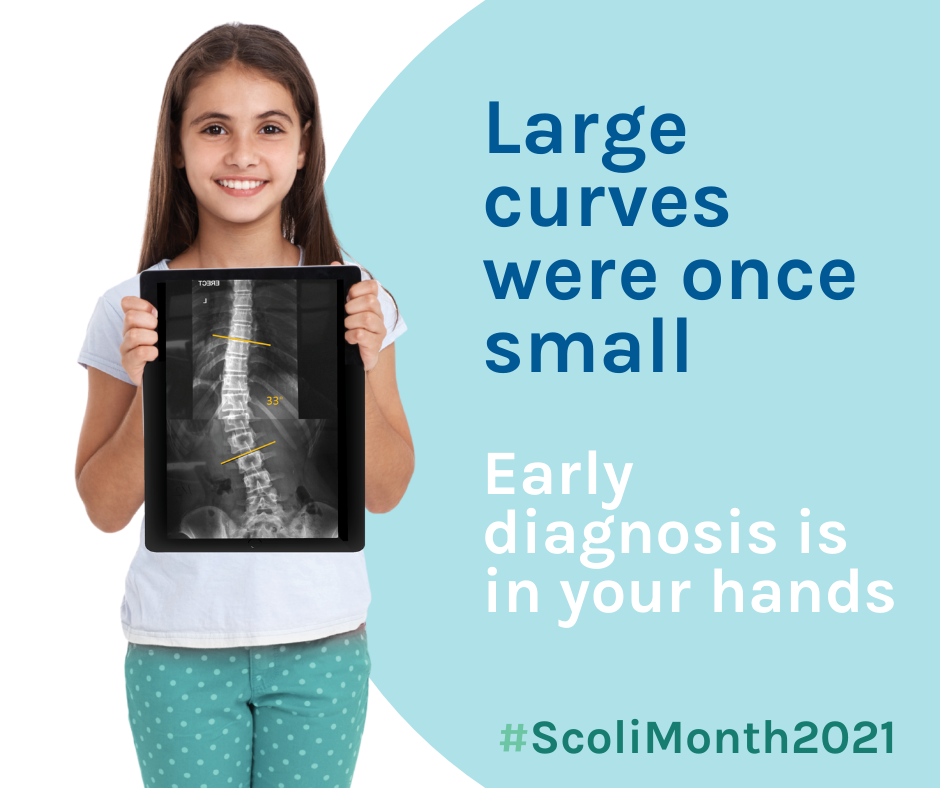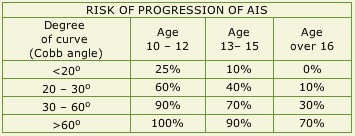Has your child been diagnosed with adolescent idiopathic scoliosis (AIS)?
When parents and children hear they have scoliosis, or curves of the spine, they want to know will scoliosis get worse? Questions and worries will often enter the mind such as, what are the risk factors? What can be done to help?

The main risk factors that determine if the spine curves in a child will get worse are”
- how big size the curve/curves are when first detected (also known as the “cobb angle”), and
- the skeletal maturity of the child, meaning how much growth left their bones have to do.
Cobb angle
The Cobb angle will tell you the severity of the scoliosis. Cobb angles that are described as 10 -25 degrees are typically mild; between 25-40 degrees are moderate; and curves over 40 degrees are severe. Research has shown that the larger the Cobb angle the bigger the risk that the curve will get worse in the future.
Skeletal Maturity
Severity of curves will often increase during growth, the more growth that remains the higher the risk the curve will worsen. The reason why is the spine is growing, too! In AIS some of the bones of the spine grow in an asymmetrical way, with one side of the vertebra growing more than the other. This causes the spine to increasingly bend and twist. Because of this the time of the greatest risk of a curves getting worse is during the main spinal growth spurt, usually during the peak of adolescent growth.
Cobb Angle and Skeletal maturity
When analyzing Cobb angle and age, Weinstein et al. found that the higher the Cobb angle and the lower the age the greater the risk of Cobb angle progression. The table below gives us an indication of the risk of AIS getting worse.

Published in The Lancet 2008 Adolescent idiopathic scoliosis S. Weinstein, L. Dolan, J. C. Cheng, A. Danielsson, J. Morcuende
Conclusion
Scoli Specific Exercises and 3D corrective custom scoliosis braces like ScoliBrace have been shown to reduce the risk of curve progression in AIS and in many cases improvements in the scoliosis are seen.
It is internationally recognized that bracing and specific exercises are the most effective conservative methods in treating scoliosis.
Owing to the high risk of curve progression in cases of adolescent idiopathic scoliosis where the spine is still growing, it is important to receive timely intervention, be it through scoliosis specific exercise or bracing. As a rule of thumb, a scoliosis specific exercise program is recommended for curves classified as low risk, whereas bracing combined with exercise will be prescribed for those curves classified as moderate to severe.
To determine which treatment for scoliosis is most appropriate for an individual patient, they should be assessed by a spine specialist, have their Cobb angle accurately measured, and then given recommendations for suitable treatment options.
